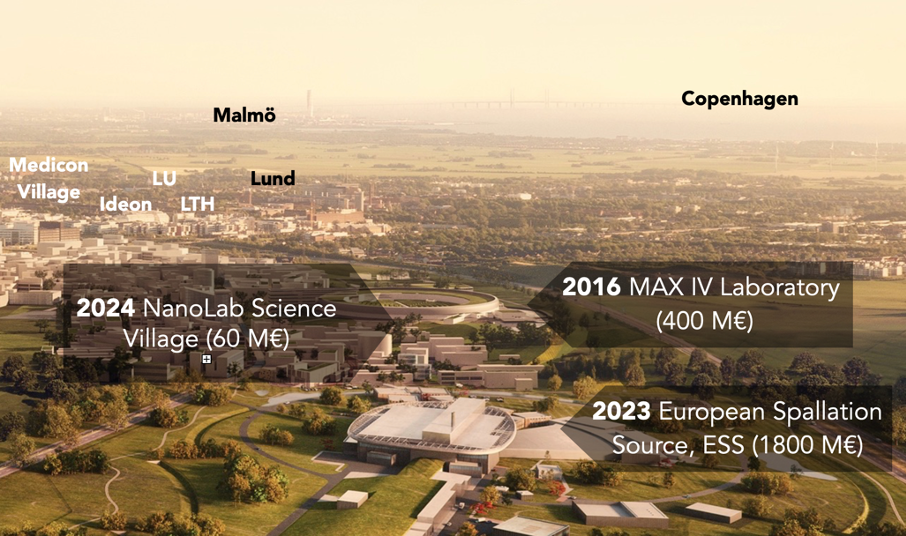After ESS and MAX IV, Nanoab Science Village is the third major research facility planned in the northern parts of Lund. The lab is part of the first stage of Lund University’s establishment in Science Village.
Nanotechnology offers the keys to sustainable solutions for the benefit of the planet and human beings. More energy-efficient, smarter, stronger, more environmentally friendly materials have become possible to create in nature’s own way. Investment in Nanolab Science Village, in immediate proximity to ESS and Max IV, gives Sweden a unique opportunity to take the lead when humanity takes the century’s next technological leap based on materials science for a better world.
Nanolab Science Village will replace the Lund Nano Lab which is a key infrastructure for all nanoresearch at Lund University and is currently run jointly by Nano Lund and the Department of Physics at Lund University. Procurement documentation is currently being prepared and a landlord could be procured by April 2021. The ambition is to complete the building by 2024.
Modern equipment requires a larger space
Lund Nano Lab currently has around 150 active users from academia and industry, but it has become a bottleneck for further development. Modern equipment requires more space and more extensive access to ventilation and other media than the current laboratory can provide.
As was the case for Lund Nano Lab, NanoLab Science Village will be part of Myfab which is the national infrastructure for nanolaboratories. Nanolab Science Village will remain open to users from both academia and companies throughout Sweden. The new lab will also be adapted to meet important requirements of users and employees at MAX IV and ESS, for example for complementary material characterisation.
A more comprehensive technology park
In this way, Nanolab Science Village will fulfil several important strategic functions. Whereas MAX IV and ESS focus on materials analysis, Nanolab Science Village will become the first infrastructure in Science Village to make advanced new materials available.
Through the establishment of the lab, Lund University will take a significant step towards realising two of the Swedish government’s major goals: to establish a world-leading research centre based in life sciences and materials research – and creating the conditions for a technology park around ESS and MAX V in Science Village.
The cost of Nanolab Science Village is estimated to be around SEK 600 million including modern equipment. The funding strategy to promote the opportunities of nanotechnology to find sustainable solutions to benefit the planet and humanity include contributions from both government and private sources.
Written by:
Professor Heiner Linke, NanoLund and Solid State Physics

